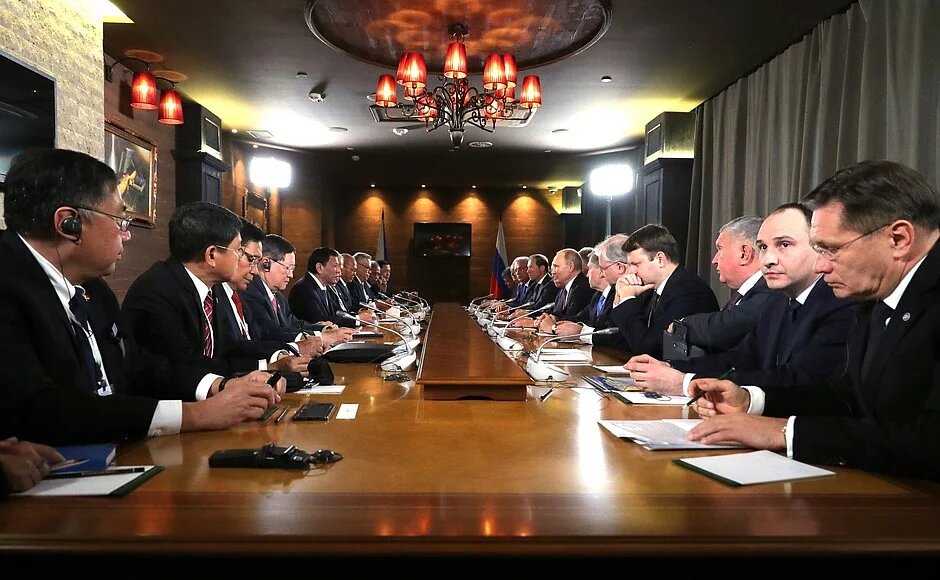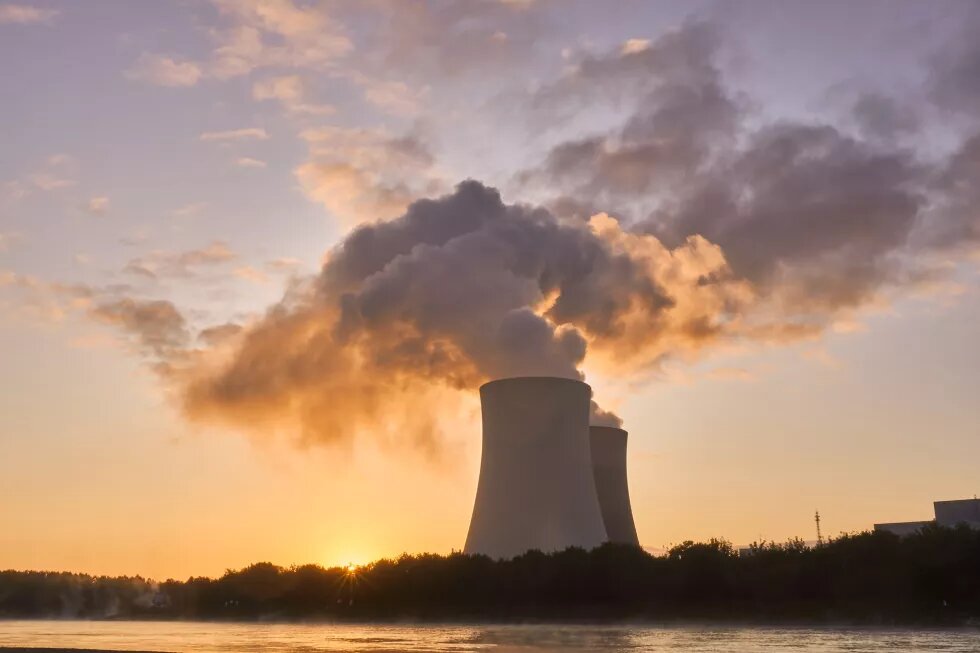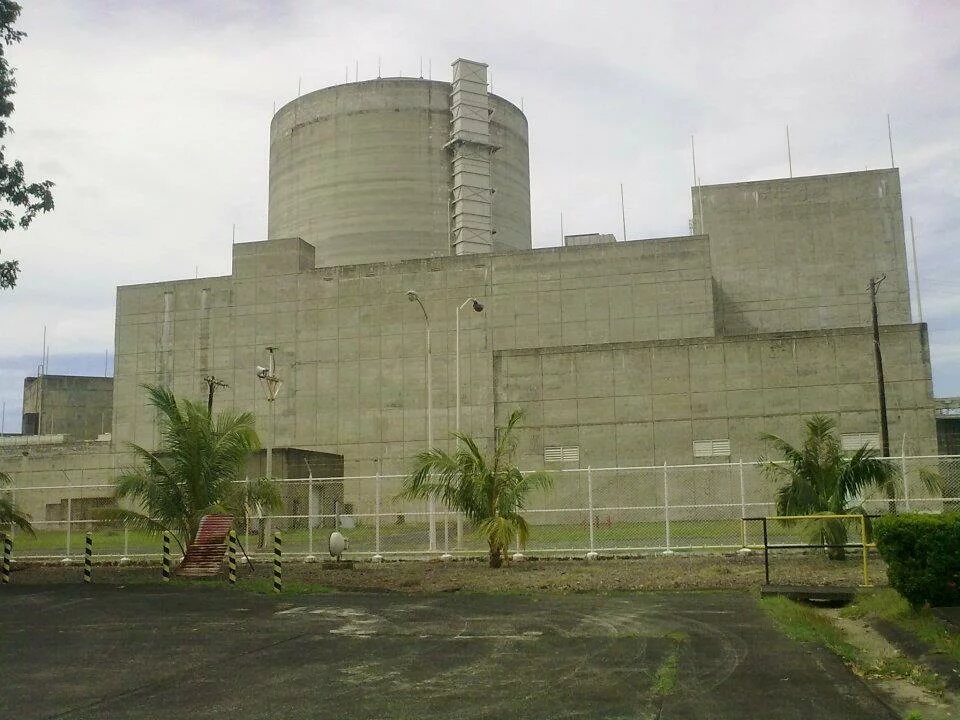
“While nuclear power may not be an option under the Duterte administration, it is still a viable power source for the country’s baseload requirements moving forward,”[1] Philippine Energy Secretary Alfonso Cusi said during the recent Alliance Global Group Sustainability Conference in the Philippines. The energy department head have yet again thrown his support in pushing for a nuclear program for the country.

He even went further by disclosing an energy department commissioned public survey on the use of nuclear in the country. According to the energy chief, based on a news article “An approval rating of 79 percent on the possible use and rehabilitation of the Bataan nuclear plant and a 65 percent approval rating on building a new nuclear plant are positive indicators on the acceptability of nuclear energy.”[2]
This recent development comes at a time when just two months ago, December 2019, the first of five nuclear reactors in Switzerland was shutdown. This came following the 2011 nuclear accident in Fukushima, Japan, which prompted global concerns on safety issues around nuclear power. This Swiss government decision to push with sustainable energy sources to develop mainly solar, wind and hydroelectric in the country, was upheld by a nationwide referendum in 2017.[3]
Its neighboring country, Germany, also made a similar decision to abandon its nuclear power stations by 2022.
Even the Japanese government, despite restarting nine (9) nuclear reactors already out of its 54 total nuclear reactors due to demands for more electricity, close to half of the whole nuclear fleet of the country is already either decommissioning or lined up for it. Right after the aftermath of the Fukushima melt down in 2011, triggered by tsunami due to an intensity 9 earthquake, there was not a single one of these nuclear reactors was in operation.[4]
Even if the Duterte government, led by its energy czar, hasn’t really commenced the building of a nuclear power plant or the revival of the Bataan nuclear plant, the fact that it is spending tax payers money to still pursue with a nuclear program, is a cause for alarm.
Nuclear power in the Philippines
These developments are not new but also surfaces again the many issues hounding nuclear energy in the country. After the Fukushima disaster, interest on nuclear surfaced again in a congress energy committee hearing in 2015. In the same year, the Department of Energy convened a core group which would oversee plans to explore and, eventually, the operation of nuclear power plants.
The DOE has since been vocal in its intent to explore nuclear energy potential, especially with the assumption of its current head into office in 2016. DOE Secretary Alfonso Cusi has been insistent in maintaining a technology-neutral approach in terms of approving and endorsing power projects, despite the Philippines already having passed a Renewable Energy Law more than a decade ago.
Efforts to influence public opinion on the matter are also apparent. In January last year, the DOE’s Nuclear Energy Programme Implementing Organization hosted a talk in which the department invited nuclear energy advocate Michael Shellenberger to discuss “Why We Need Nuclear Energy”.[5] Shellenberger’s visit was also heavily publicized, with his itinerary having included an appearance on a national television show.
In August 2019, the DOE announced that it is conducting a perception study on nuclear energy through a third party, the results of which would be submitted to the Office of the President afterwards. Secretary Cusi also declared, “I believe this is the time for us to take a leap and include nuclear power into our energy mix. We wouldn’t want to wait until we are all crying for power before we actually do something.”[6]
Despite difficulties in the formulation and possible implementation of a nuclear energy program in the Philippines, the determination of the Department of Energy to explore nuclear energy, not heeding the warning and concerns that environmental advocates have repeatedly raised, was proven anew this October 2019.
A New Nuclear Deal
During his visit to Moscow in the first week of October 2019 to attend the Philippines-Russia Business Forum, President Duterte invited Russian companies to take part in the Build, Build, Build program currently being implemented in the Philippines. 10 business agreements with Russia, estimated to be worth $12.57 million or around ₱650 million, were signed by Duterte, including a “Memorandum of Intent on intention to jointly explore the prospects of cooperation in the construction of nuclear power plants in the Philippines.”[7]
While Presidential Spokesperson Salvador Panelo clarifies that the Memorandum of Intent was only a framework for discussion, Russian media outlets have earlier reported that Rosatom State Atomic Energy Corporation offered to build floating nuclear power plants in the Philippines.[8] The Philippines has, on the other hand, not been transparent as to what the deal ensues; Panelo says that the President “wanted to study first the proposal.”[9] While Philippine Ambassador to Russia Carlos Sorreta states that Russia and the Philippines’ collaboration on the development of nuclear energy in the country are still in the preliminary stages, Russian Ambassador to the Philippines Igor Khovaev’s assurance that “we are ready to help the Philippines in developing your nuclear industry,” must be taken by anti-nuclear advocates as a sign that nuclear energy will be fiercely pursued.[10]
ROSATOM
The Russian State Atomic Energy Corporation (ROSATOM), the reported proponent of the development of nuclear facilities in the Philippines, is a Russian state corporation whose headquarters are located in Moscow. It boasts of being the only company in the world offering services across the nuclear supply chain (design, construction and operation of nuclear plants; uranium mining, conversion, and enrichment; supply of nuclear fuel; decommissioning; spent fuel storage and transportation; and disposal of nuclear waste), over 300 enterprises and organizations, and over 250,000 employees. Rosatom also takes pride in having the world’s only nuclear-powered icebreaker fleet; supplying 18.7% of Russia’s power through nuclear facilities; having at least 36 units of nuclear reactors abroad at various stages of operation; and being among the top companies in the world in terms of uranium reserves and extraction.[11]
A clean operational track record, however, is not among the achievements that Rosatom can boast of. Rosatom’s nuclear legacy goes far beyond its founding year of 2007, the time when Russian President Vladimir Putin signed its establishment into law, as the state corporation also serves as the inheritor of both military and civil nuclear programmes launched by the Soviet Union in the 1940s and the Russian Federation in 1991. An elaborate study released by international environmental organization Greenpeace in 2014 reports that “those countries entertaining or signing contracts with Rosatom are aligning themselves with a nuclear programme that has a history of serious accidents. The most dramatic example was the 1986 Chernobyl nuclear accident in Ukraine.”[12]
The study reports that Rosatom’s structure as a state-backed entity and its weak operational model has brought about problems with nuclear safety, corruption, the poor handling of nuclear waste, and the risks of the proliferation of nuclear bombs from the company’s nuclear waste import deals, conflicts of interest, and corporate cultural issues that arise from consolidating both the industries for nuclear weapons and nuclear power into one entity.
The Greenpeace report concludes: “Rosatom presents major concerns as a business partner in every respect. From a financial, safety, political and security perspective, the company’s nuclear expansion ambitions both within Russia and abroad pose unnecessary and unacceptable risks to communities and potential customers alike.” In this light, a partnership with Rosatom would bring greater risks than good to the Filipino people.
Bataan Nuclear Plant
The potential of harnessing power from nuclear energy was first explored in the Philippines in the 1970s, prompted by the oil crisis which emanated from an embargo imposed by the Organization of Petroleum Exporting Countries (OPEC) against the United States and several other countries.[13] In 1972, as much as 100% of the country’s electricity was produced using oil, and the sudden spike in oil prices had forced the government to make efforts in diversifying the power mix.[14]
Construction of the first and, to this date, only nuclear power plant began in 1976 in Morong, Bataan, four years into the Martial Law period under then President Ferdinand Marcos. The Bataan Nuclear Power Plant (BNPP) cost a total of $2.3 Billion USD, and was expected to generate 621 MW of power,[15] but the project was shelved despite having reached near-completion due to the discovery, by an independent inquiry by the Puno Commission, of structural defects in the plant that made it unfit for commercial operation. Following the fall of Marcos’s dictatorship in 1986, issues of corruption surrounding the project also gave newly elected President Cory Aquino more reason not to push through with the plant’s operation. Months later, the plant was ultimately closed in the wake of the Chernobyl nuclear disaster.[16]
Throughout the 3 decades since its closure, however, the desire to revive the BNPP has been repeatedly aired by both members of the Philippine government and other nuclear energy advocates. In fact, despite having been able to pay the full $2.3 Billion USD used to fund the project only in 2007, the government has continued to spend Php 40-50 million every year for the maintenance of the nuclear facility.[17]
Renewable Energy rather than Nuclear (and Fossil Fuels)
The recent revival of the push for Nuclear in the country surfaces again the myths that have continuously cropped up but have long been refuted by actual experiences and actions by governments across the globe.
Nuclear energy is not clean; neither is it truly renewable. While atomic energy can be regenerated, the substance (such as Uranium) used to generate electricity is a finite resource. These materials are also, just like fossil fuels, extracted through mining and need further processes before being usable in nuclear plants. Processing of these materials also pose risks for the environment, and are also likely to contribute greenhouse gas emissions rather than mitigate them, as is often claimed by proponents of nuclear projects.[18]
Nuclear energy would also not be cheap. The Uranium needed to fuel a nuclear facility in the Philippines would have to be imported as deposits of it do not exist in the Philippines. Not only would it reduce the Philippines’ energy independence, it would also render the price we pay for our electricity needs dependent on changes in the price of Uranium in the global market. Transportation of these substances are also another cost which would have to be shouldered.[19] Costs of building, operating, and eventually decommissioning nuclear plants are also much more costly than renewables. According to an editorial of Mainchi Shimbun, a Japanese mass-circulation newspaper, based on its own research, articulates that 11 of the top power suppliers in Japan had spent in excess of 5 Trillion yen ($45.7 Billion) on nuclear safety since Fukushima. In a country, like Japan, that is within the “ring of fire” where volcanoes are almost everywhere and earthquakes are a natural occurrence, who would then bear the brunt of the cost of safety? This clearly belies the arguments of nuclear energy proponents that it is cheap.
But the most glaring reality in the Philippines, is that it is blessed with numerous sources of renewable energy. The energy department of the Philippine government itself, through its National Renewable Energy Plan and Roadmap, have outlined that the total potential overall output from renewable energy is more around 250GW, excluding solar power. The said potential is already more than 10 times the current total power mix of the whole country, with wind power alone, could produce around 76GW.
And in recent times, we have seen a significant drop of renewable energy prices in the country, with the lowest grid price tendered at around P2.99/kwh for solar and P3.50/kwh for wind. Notwithstanding the price of rooftop PV which is already around P3.00/Kwh compared to P11.00/kwh in Metro Manila. This can developments can only further advance as more renewable energy mechanisms are being implemented by the national government.
As the energy chief also elaborated during the sustainability conference where he manifested his support for nuclear energy yet again, where Secretary Cusi trumpeted the country’s renewable energy initiatives, “Among the various RE policies we have been relentlessly pursuing are the Renewable Portfolio Standards, a supply-side policy which will mandate distribution utilities to source a minimum portion of energy from renewable sources, thus, guaranteeing a market for renewable energy generators. This minimum will be increased on a yearly basis by at least one percent,” he said.
Thus, it is a no brainer to not prioritize and pursue the full development of renewable energy systems in the country.
References
[6] https://businessmirror.com.ph/2019/08/19/doe-to-submit-results-of-perception-study-on-nuclear-energy-to-duterte/
[7] https://www.rappler.com/business/241839-duterte-invite-russian-businessmen-invest-ph-infrastructure
[8] https://cnnphilippines.com/news/2019/10/5/Duterte-Russia-visit-agreements-nuclear-power-plant-.html
[14] http://ieefa.org/wp-content/uploads/2017/10/Carving-out-Coal-in-the-Philippines_IEEFAICSC_ONLINE_12Oct2017.pdf
[16] https://www.gmanetwork.com/news/news/nation/146965/proponents-critics-clash-at-house-deliberation-on-bnpp-revival/story/
